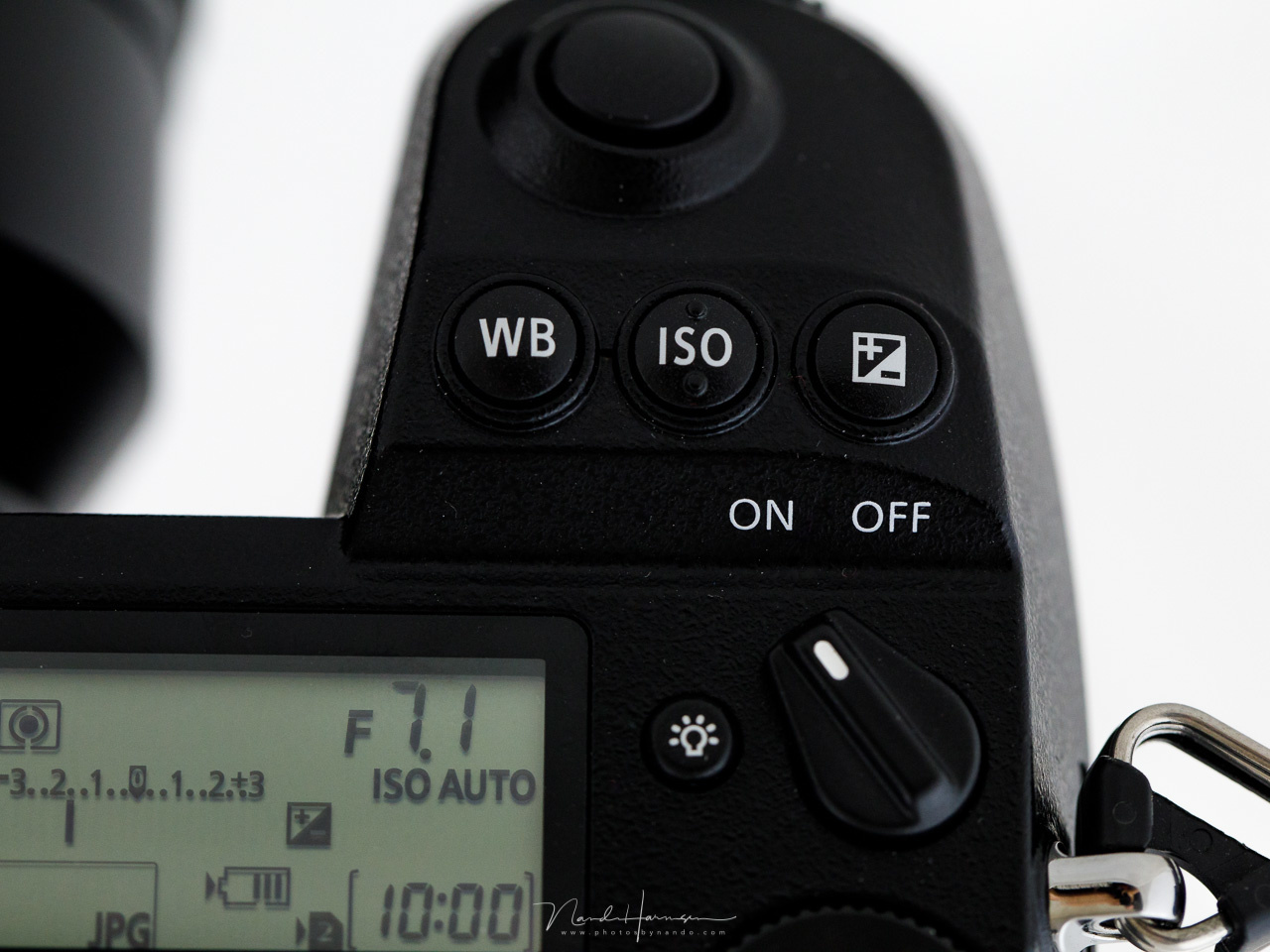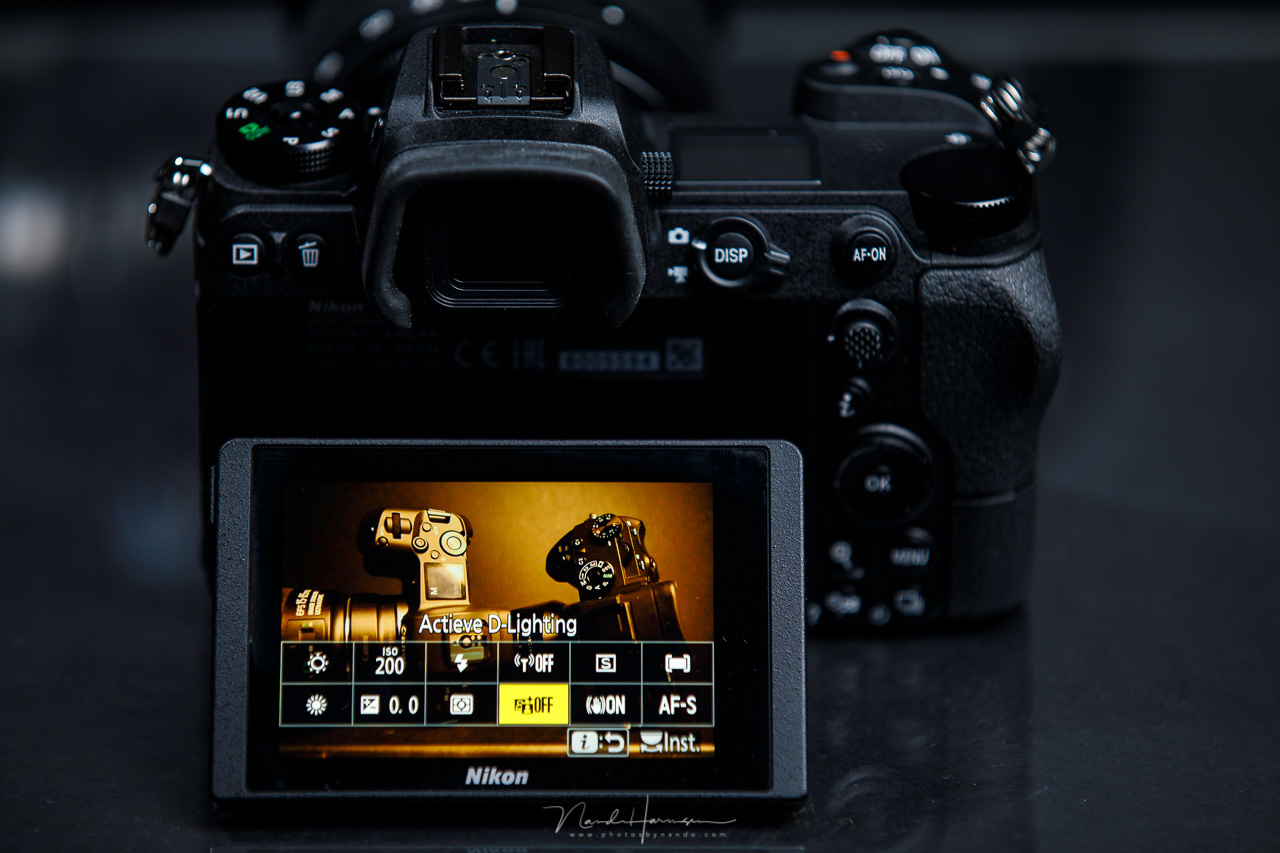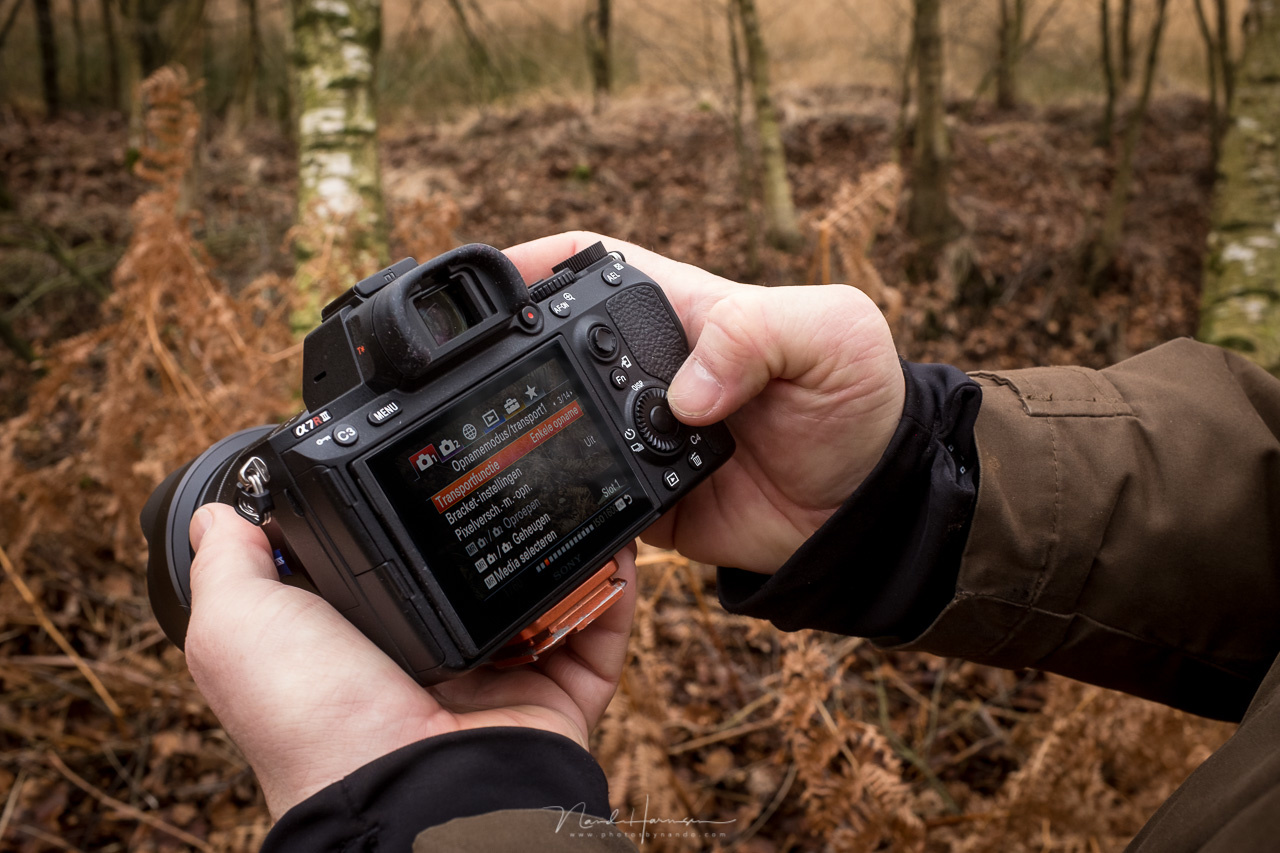Did you know a lot of people use their camera without setting it up for their needs? If you have done this already, you may find nothing new in this article. If you don’t know what I am talking about, perhaps you should read it.
I see a lot beginning photographers in my workshops. Except one or two, no one has customized their camera for their own needs. Often, they don’t even know of the possibilities and they use the camera and settings just the way it came out of the box. Yes, a few have chosen the raw file format, and some settings that can be called obvious to change, like auto focus settings, meter settings, continues shooting, or the white balance. And, of course, the preferred PSAM setting. But that’s it.

I have seen many times how people use the camera right out of the box. Only the obvious buttons are being used, and they forget to discover the endless setup possibilities.
When I ask for a certain setting to change, because it may help to shoot the subject of their choice, they search their menu and often get lost in the process. It is easy to overlook that one setting in that moment. And if they have found and changed it, the next time they need to change it back they forgot where they had found it. The more you use that function, the easier it gets, of course. But it can be so much easier when they make a much used menu item more accessible. Most cameras have that possibility.

A typical Sony menu, often considered as one of the most troublesome. It can be a pain to search for a certain function or option. Fortunately a camera like this can be customized in such a way, that you don't have to go through the menu every time.
The modern digital camera often can be considered as a computer, rather than a camera. Sure, it takes photos, but you can make all sorts of adjustments, settings, it even has a computer screen. The interface of that computer is not always that logical, or it can be overwhelming. When you need a few menu options a lot, you may need to dig in deep to find it, sometimes losing valuable time with a possibility to mis the moment. That is why you might want to program the most used menu options into a custom menu. This menu can be called IQ, or Q, or C, or just My Menu. And sometimes these can be a combination also, depending on the brand of camera. I like to have the LCD brightness setting in My Menu, the BULB timer, and highlight warning also. I use these menu options a lot and by gathering these into My Menu, it is easier and much quicker to change.

The My Menu tab of a Canon camera, where you can gather a collection of menu functions for easy access. Canon offers the possibility to make multiple My Menu tabs.
Some cameras have more advanced possibilities than others, giving much more flexibility or more room to combine different menu options into a personal tab. The modern Nikon can add a lot of menu options, making it a long list to scroll through. Canon can hold up to six menu items per tab but has the ability to make more than one tab into the My Menu. Sony is limited to only six options, and Fujifilm also has a limit to the amount of personal menu options.

The My Menu of a Fujifilm GFX, the place for the most used menu options. The amount of options can be limited, depending on the brand, and even type of camera.
Then there is the quick menu, found on almost every modern camera. Here you can gather another set of options that are accessible with the push of a button. It can be called the Q menu, or C menu, but no matter what name is linked to it, this menu gives another option to quickly change settings without diving into an extensive menu structure. Again, the possibilities may be limited to what the manufacturer has programed. Some quick menu options can be changed in almost everything, others have a selection that you can chose from.

The custom menu of a Fujifilm camera. A set of options placed in a grid for easy access. IN this case, most functions are chosen by the manufacturer, but you can make program than one configurations.

The Q menu of Nikon offers a place for twelve settings. You are able to change which settings you want to see in this menu. It makes it easy to change often used settings, and it is a place to check how a certain setting is.
You might also find a find a few custom settings on the PSAM wheel found on most cameras. These custom settings, named C1, C2, C3, or U1, U2, and U3, can hold a extensive configuration that is optimized for a certain kind of photography. I have set a configuration for moving animals under C3. With just one turn of the dial it will configure my camera for that kind of subjects. I have continues auto focus, the maximum amount of AF points, high speed continues shooting, shutter priority, auto-ISO, and I can choose any other camera option that I find suitable for that kind of photography. One of the other custom settings is programed for indoor flash photography with a speedlite. When I find myself in a situation where I need to switch between a whole different set of settings, I can program this into one of those custom setting. The funny thing is, I have placed the menu option "safe settings into C1, C2 or C3" into My Menu for easy access.

The top plate of a Sony camera shows the PSAM wheel (or PASM in this case). Next to these possibilities there are also three custom settings that can be programmed. This way you can make multiple changes to the behavior of a camera by just one twist of a dial.
Last but not least, a lot of buttons of the modern cameras can be programed to another function. Some buttons can even have multiple functions. Especially Sony and Panasonic go very far in what is possible. This way you can reprogram the camera to your own liking. There is a small downside to this; you have to get used to the new functions, which may be different from the pictogram that is printed on or next to those buttons. And you likely will be the only one that will be able to operate that camera.

Buttoms have a standard function, chosen by the manufacturer. But a lot of buttons can be reprogrammed for your own needs or wishes. Some camera offer a limited amount of options per button, others almost an unlimited amount of options.

The button custumization of a Fujifilm camera. You can make your camera very personal, having the most options available with the push of a button.
The personalization can go very far with modern cameras. It may help you switch between different settings, or a swift change of settings that otherwise will be difficult and time consuming to find into the extensive menu structure. Using the camera customization may also prevent you from getting familiar with menu. Well, not at first, but if you never need to dive into the menu, it might become again very troublesome to find that one setting you need to change.

Customization makes a camera very personal and easy to use. You don't have to dive into the menu anymore. But if you never have to look into the menu, you won't get familiar with the menu of your camera. Searching for an option can be very frustrating again, because you once knew where to find it.
Have you customized your camera? I would love to hear about your experience with this kind of customization in the comment below.







Did customization on Day 2 of playing with my Fujifilm X-T3 - customized Q menu layout and functions, and set up My Menu. Initial idea was to simulate controls to match my other camera from Nikon as much as possible, and most things I use are now the same or very similar through both.
Only thing I was not able to customize is Data Save setup - would love to switch active card with dedicated button - as I do a lot of sports photography and would live to quickly separate competition action and behind-the-scenes shots.
I understand you do not use the second card slot for backup purposes?
Nope, currently I use it as separate storage for photo and video I take during the event - I shoot at Kiteboarding World Tour competitions - and would rather use two slots to speed up flushing buffers faster (if camera would allow parallel interleaved write to both cards simultaneously), or at least for quick categorization - I'd assign that to a hotkey.
And that is exactly where I find camera customization pefectly useful - that is a kind of need I personally have for that specific kind of shooting I do.
If camera would allow more flexible folder naming and switching top level folders with assignable hotkey, that would work, too... But none is avail for X-T3 AFAIK. Am I missing something?
I never heard about writing to a card like a RAID1 configuration. It would speed up flushing buffers, but I guess it would be difficult copying data from your cards. Imagine what will happen if one card gets corrupt...
Many systems implement interleaved write on pure software layer without RAID-style configurations involved if data fit the scheme - simple technique of writing odd-numbered images to card 1 and even-numbered images to card 2 would do the thing without making copying too complicated, and effectively may nearly double buffer flush speed. This is what I meant on interleaved writes in mu cimment above. And yes - RAID1 would be an overkill, that is true.
Ah, now I understand. It would be very simple to program this into firmware, but as long as there is no visible need with a large group of photographers, I doubt it will happen.
Today I learned that there is something called the PSAM (or PASM) wheel... :)
You are never too old to learn ;)
I do not agree with these suggestions. I would say I am an advanced learner. When I compared my customized camera with the one I did not, I noticed that the photos did not all look the same when I took them with a camera I did not customize. I think customizing a camera somehow locks you into a certain style. That is my amateur observation.
"I think customizing a camera somehow locks you into a certain style." How are these two related?
Customization just helps you to use your working tool with more ease and focus on the creative side. It's like adjusting your chair height: you don't have to do it but why not be more comfortable?
Agree and disagree - let us take the chair height as an example - this is really pushing it and just have fun and not a serious debate - if you have your chair height at a certain fixed point you are less likely to see things placed in certain angles as opposed to a free wheeling seat height.
Customizing a camera has nothing to do with how an image will turn out. It is all about the way a camera works. It makes it easier to use your tool but it won't change the data you will capture.
But I guess you refer to camera profiles, and such things. With that you change the way a (jpg) image will turn out. And yes, if you change that, the result will be different.
I wish there was (if there is I've not found it) a quick 'profile' switching option for Sony cameras. For instance I might be somewhere shooting images and video at more of less the same time. Is there a way I can set a preset for video (shutter speed, colour profile, etc) and one for photo, so I can just switch preset and start rolling right away?
I don't know it that is possible with Sony. Isn't it possible to place a complete profile under the 1, 2, or 3, on the PSAM wheel?
Perhaps some Sony user can help you with this.
I did try that but ran into some issue or other, I'll give it another try. It's just remembering to do it when I'm not actually on a job!
BTW After you customize all your settings, take a spreadsheet or word document and jot down all your settings. Sending the camera out for service or even an accidental reset will delete all your custom work. This way you'll know how to reset everything to your specs.Believe me, it can save your bacon.
A wise idea.